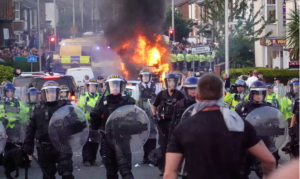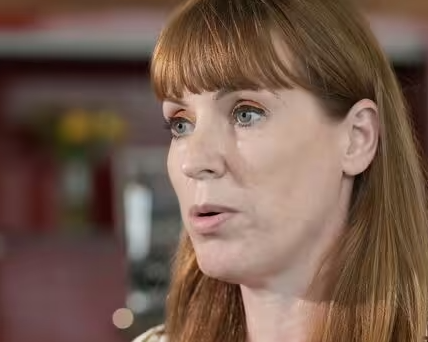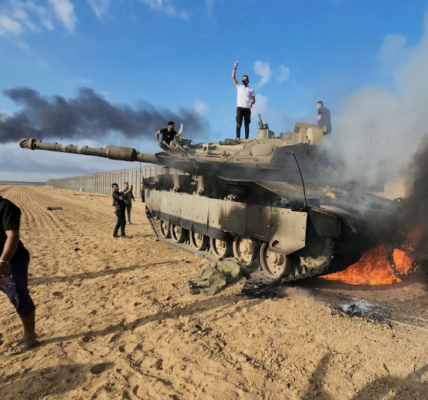Sir Mark Rowley says summer disorder was ‘brutal and difficult time’ and rebuts far-right claim of two-tier policing

Riot police hold back protesters near a burning police vehicle after disorder broke out on July 30, 2024 in Southport. Sir Mark Rowley also raised concerns about the risk of a crush at Notting Hill carnival during the policing board hearing. Photograph: Getty Images
The people behind the violence in England this summer were “largely racially motivated criminal thugs”, the Metropolitan police commissioner has said, as he revealed that some of those arrested in London had previous convictions for violent offences.
Sir Mark Rowley said data about those arrested after a supposed protest in Whitehall, in central London, in late July supported his view.
Serious disorder broke out triggered by false information about the alleged identity of man who killed three children at a dance class in Southport, Merseyside. The next night there was a riot in the town, followed by further violent gatherings across England that triggered a huge police mobilisation.
Rowley was speaking at the London policing board, and the data about the previous criminal history of those accused of involvement in the London disorder was contained in police documents submitted to the board.
The Met said that at the so-called protest just outside Downing Street on 31 July, 92 individuals were arrested over a total of 108 alleged offences.
One-third of those alleged offences involved violence, and 62% of those arrested in those cases “had a previous arrest or conviction for violent offending, including murder”, the Met document said.
It said 39% were known for drug offences, “8% have a history of racially aggravated offending, and 2% have a history of homophobia. Four individuals (6%) are known for child sexual abuse and exploitation, three of which included rape or sexual assault of a child, and one for possession of indecent images of children.”
It added: “Forty per cent of those with a criminal history of violent offences are known for offences against women and girls.”
The Met document said 20% had no recorded history of criminality.

Rowley said it was “a very violent protest” and it had been a “brutal and difficult time for policing”.
Online, hate had spewed towards minorities but also towards officers, the commissioner said, and he hit out at a widely derided far-right claim of two-tier policing. “It was also toxic towards police officers and increased the violence that they faced. Part of that was suggesting that these were somehow legitimate protests and were being unfairly policed.”
Rowley said: “The vast majority of them are criminals with a violent history. Violence against women and girls, football violence … They don’t look an average bunch of citizens to me, they’re basically largely a bunch of racially motivated criminal thugs.”
He said he had been nervous about the counter-protests, largely organised by anti-racism groups, but in the end they helped policing.
Rowley also said he feared that the annual Notting Hill carnival could become the scene of a Hillsborough-style crush causing scores of deaths, and said the event was “poorly run”.
In the Hillsborough football disaster in 1989, 97 people died, mostly after being crushed after a surge of fans in the Sheffield stadium.
Rowley said he supported the carnival taking placed but a mass crush was his biggest fear. “So we try and put in mitigations to try and reduce the risk of a Hillsborough-type event, but we are mitigating something that is unsatisfactory. You can’t mitigate all that risk out.”


